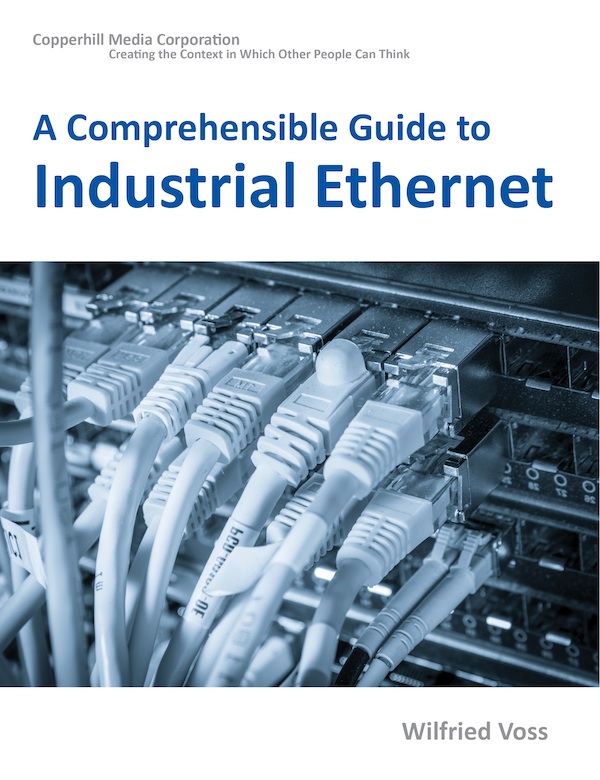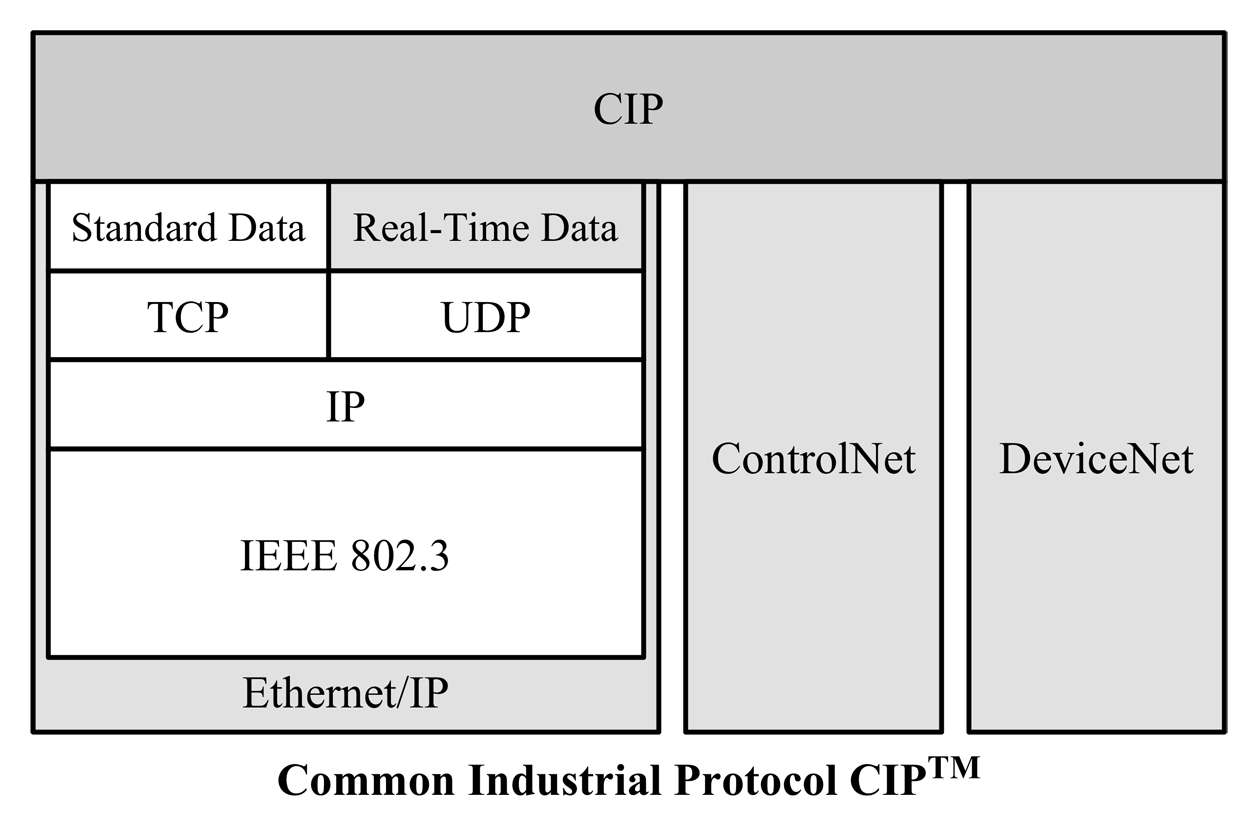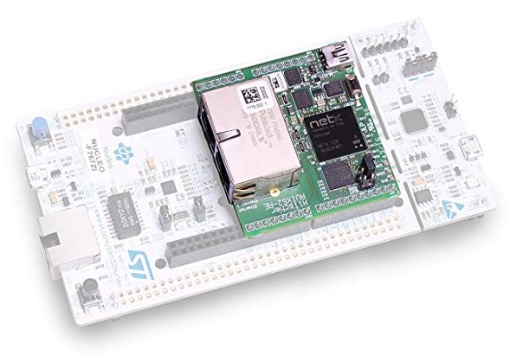Recent Posts
Industrial Ethernet Guide - Ethernet/IP
Posted by on

The following is part of A Comprehensible Guide to Industrial Ethernet by Wilfried Voss.
Initially released in 2000, Ethernet/IP is an open application-layer protocol developed by Allen-Bradley (Rockwell Automation) and maintained by ControlNet International (CI), the Open DeviceNet Vendor Association (ODVA), and the Industrial Ethernet Association (IEA).
Note: The “IP” in Ethernet/IP stands for “Industrial Protocol” and must not be confused with the “Internet Protocol” in TCP/IP.
Ethernet/IP represents a compromise between the mere Ethernet TCP/IP standard and achievable performance for real-time data transfer.
While it may not be the optimum choice regarding hard real-time control, it is nevertheless the most influential player in the global market due to the “political” support by Rockwell Automation. The success of Ethernet/IP is also living proof that presenting a quick and working product can create market dominance over succeeding “perfect” solutions.
EtherNet/IP is predominantly established in the North-American market and is often used with Rockwell control systems.
It is built on the existing IEEE 802.3 physical and data link layers and TCP/IP/UDP, compatible with standard Internet protocols (e.g., HTTP, FTP, SNMP, and DHCP) and allows optimal interoperability with most information-level networks.
Meeting customer demands for the Ethernet technology plant of the future was a significant focus during the development of Ethernet/IP. It was designed to address enterprise communication, allowing the smooth integration of additional devices, including network traffic from other protocols and Web servers.

All protocol features relevant to supporting automation including real-time control are based on established and standardized components such as the Common Industrial Protocol (CIP)[1] and its extensions, such as CIP Sync for synchronization and CIP Motion to support distributed motion control applications. CIP Sync, in turn, is based on IEEE 1588 and its Precision Time Protocol (PTP).
CIP is a flexible and scalable automation protocol well suited for distributed systems with features such as object-orientation, electronic datasheets, and device profiles.
Features Overview
- Ethernet/IP is designed to address enterprise communication, allowing easy integration of additional devices, including network traffic from other protocols and Web servers.
- The Common Industrial Protocol (CIP) addresses safety aspects allowing safety devices to coexist with standard control devices on the same network.
- CIP Motion, an extension to CIP, adds real-time, closed-loop motion control to Ethernet TCP/IP/UDP to enable multi-axis, distributed motion control applications (This statement by the ODVA must be taken with caution. The responsibility for real-time control is with the end devices, not the network).
- CIP Sync, yet another extension, can deliver synchronization accuracy of better than 500 nanoseconds between devices, but the jitter attached to the protocol remains an issue for high-speed demands that go beyond standard motion control.
- EtherNet/IP typically achieves soft real-time performance with cycle times around 10 milliseconds.
- Ethernet/IP uses TCP/IP for initialization and configuration (explicit) messages and UDP/IP with its reduced overhead for real-time communication (implicit messaging), however, adding jitter and non-determinism to the protocol.
- Ethernet/IP avoids message collision through switched Ethernet, generally implemented in a star topology.
- Special switches are required supporting IEEE 1588 (clock synchronization).
More Information
- The Common Industrial Protocol (CIP™)...
- CIP Sync...
- CIP Safety...
- CIP Motion...
- CIP Energy...
- CIP Security...
netSHIELD"NSHIELD 52-RE" - Industrial Ethernet Development Platform
 netSHIELD is an evaluation expansion board with Arduino compatible connectors for development purposes.
netSHIELD is an evaluation expansion board with Arduino compatible connectors for development purposes.
It enables the user to connect a Microcontroller based application to all market relevant Real-Time-Ethernet industrial networks with best-in-class real-time capabilities, like PROFINET, Ethernet/IP, EtherCAT, and others.
The extension board features a netX 52 system-on-chip. The netX SoC architecture is designed from the ground up for the highest demands on flexibility, determinism, and performance in terms of multi-protocol capability and low latency for short cycle times. The heterogeneous multi-core architecture features an ARM processor core, coupled with a flexible communication subsystem (xC) for varieties of industrial applications support.
 Loading... Please wait...
Loading... Please wait...
